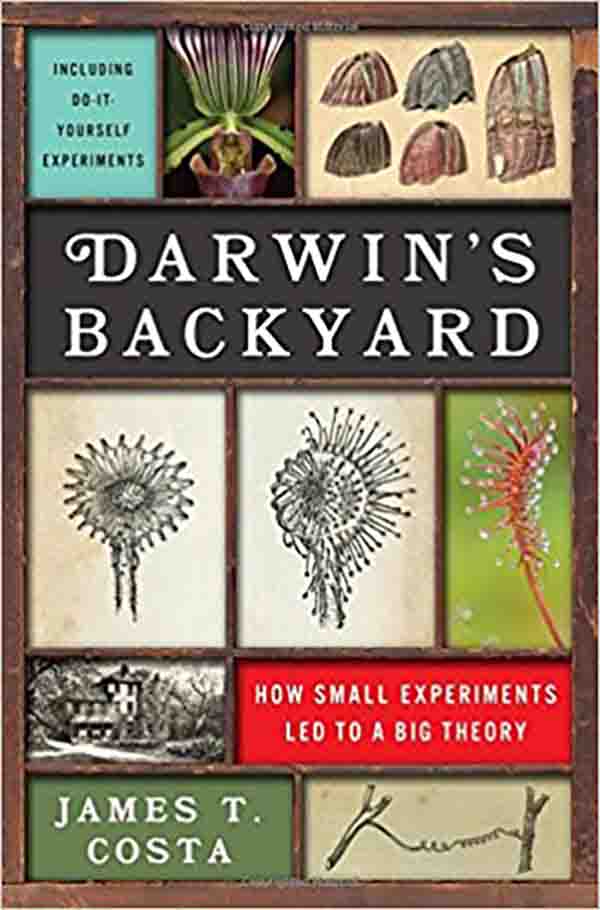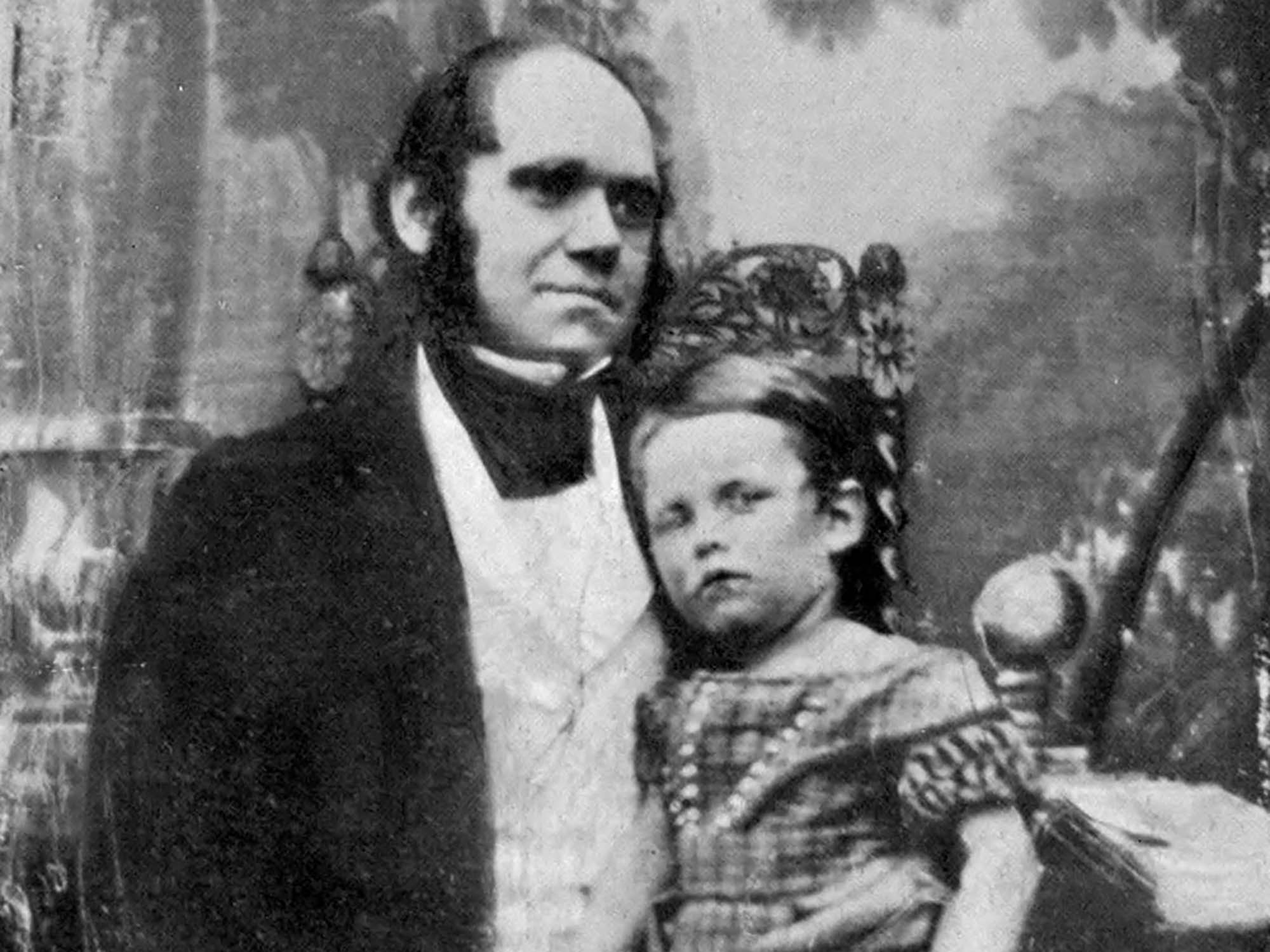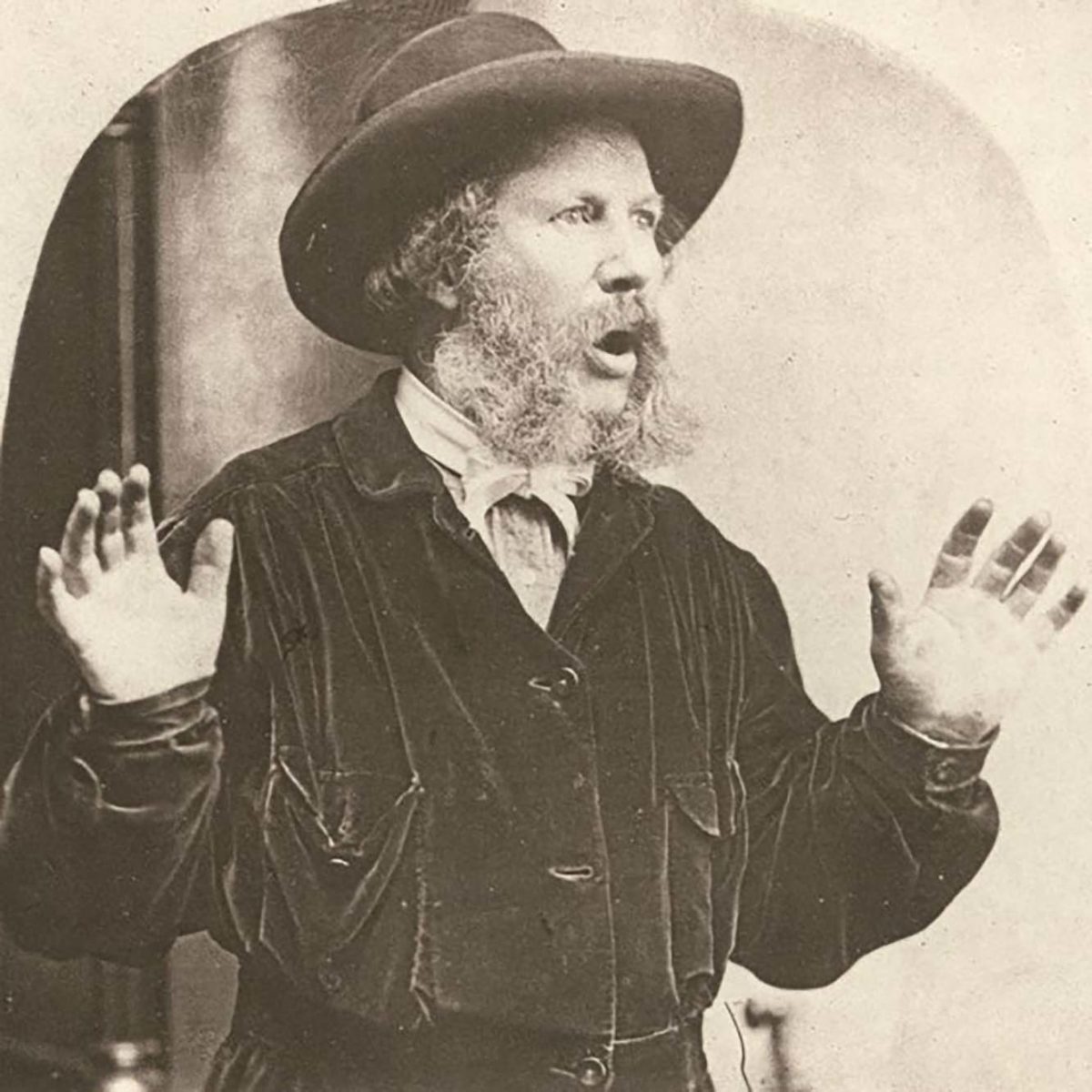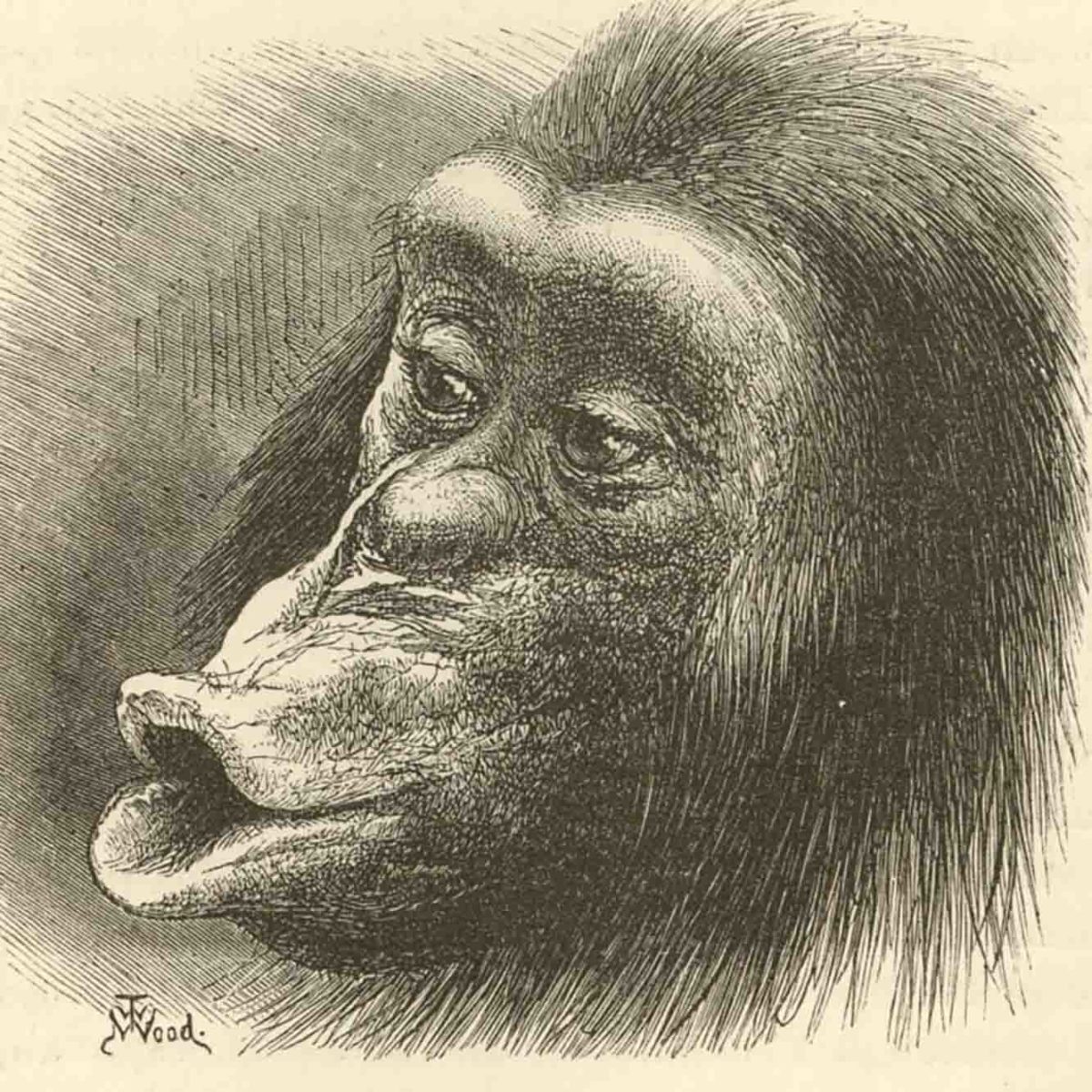One day in May of 1840, a young scientist in London did something that will sound strange to any new parent: He deliberately startled his 4-month-old son, provoking piercing squalls from the baby and probably a baleful glare from his wife. Then he did it again.

WHAT I LEFT OUT is a recurring feature in which book authors are invited to share anecdotes and narratives that, for whatever reason, did not make it into their final manuscripts. In this installment, James T. Costa shares a story that was left out of his new book, “Darwin’s Backyard: How Small Experiments Led to a Big Theory” (W.W. Norton).
The scientist was Charles Darwin, and the experiment on his son Willy turned out to be an often-overlooked landmark in the history of science. Darwin, then just 31 years old, had become a convert to the field of “transmutation,” as evolution was called then, and had experienced an epiphany when he discovered its driver, which he dubbed natural selection. The former theology student immediately grasped the implications of this theory, declaring that the theological interpretation of the natural world had been undone by scientific evidence — “The fabric falls!” as he put it in a notebook. And while Darwin remains best known for his world-shaking theories on plant and animal evolution, as put forward in the 1859 book “On the Origin of Species,” people and society were never far from his mind.
Convinced of the evolutionary unity of life, Darwin naturally saw humans as part of the tapestry: They were animals too, after all. (Carl Linnaeus may have been deliberately provocative when, in 1758, he derived the taxonomic name “primates” from the Latin for “prime” or “first rank,” to refer not only to humans but to monkeys and apes; it also happened to be the term applied to bishops.) The standard view of the time was that, despite superficial similarities, there was no true relationship between humans and other primates, let alone other animals. Weren’t we humans clearly endowed with a soul and mental qualities that set us apart from and above the animal kingdom? But Darwin saw deeper significance in the family relationship, one of continuity, common descent. To him, there was no real gap between people and primates — differences, yes, but of degree and not kind. “Origin of man now proved,” he declared in 1838. “He who understands baboon would do more towards metaphysics than Locke.”
But it wasn’t enough to base that argument on anatomy alone. So in the same spirit that he applied to other pinnacles of evolutionary perfection — notably vertebrate eyes and bees’ cells — Darwin resolved to search for evidence of the animal origins of our very emotions and mental endowments. He saw that just as the study of anatomical stages can give insight into the origin and evolution of specialized structure, so too can the study of mental development reveal pathways for highly developed cognitive abilities. Both, too, can inform species relationships. In an 1838 notebook, “Metaphysics on morals and speculations on expression,” Darwin posed questions to himself, scrawled on the inside back cover under the heading “Natural History of Babies”: `
Do babies start, (i.e. useless sudden movement of muscle) very early in life?
Do they wink, when anything placed before their eyes, very young, before experience can have taught them to avoid danger?
Do they know frown, when they first see it?
His idea was twofold: to document how, in terms of muscle contraction patterns, certain emotions or sensations are expressed in comparison with other species; and to trace when — at what stage of development — emotions and feelings (deception and jealousy, for example) are manifested. Like so many of Darwin’s ideas, baby natural history was quite original, born of a particular evolutionary perspective that perhaps he alone possessed at that time.

But where to find babies to observe? A cousin (and later brother-in-law), Hensleigh Wedgwood, and his wife, Fanny, were, conveniently, brand-new parents: Little Ernest Hensleigh Wedgwood was born that same year, 1838. Darwin pumped his cousin for information about infant behaviors that could be considered instinctive, seeking those telltale links between emotional expression and its significance in human communication:
Hensleigh. W. says that babies know a frown very early in life. … (I think I have seen same thing before they could understand, what frowning means) if so this is precisely analogous or identical, with bird knowing a cat, the first it sees it — it is frightened without knowing why — the child dislikes the frown without knowing why. …
Or, later, in the notebook:
Seeing a Baby (like Hensleigh’s) smile and frown, who can doubt these are instinctive — child does not sneer, because no young animal has canine teeth.

Darwin commissioned a multitude of photographs of adults and children expressing different emotional states.
Visual courtesy of John van Wyhe
Soon his own home became a baby-watching field site. Darwin married Hensleigh’s sister Emma on January 29, 1839, and before the year was out he had his own baby to observe: William Erasmus Darwin arrived on December 27, the first of the Darwins’ 10 children. Willy, or Doddy, was the apple of their eye — and the subject of a dedicated notebook. Reading from it, imagine an Attenborough-style narration as a camera pans and zooms in on Willy:
During first week, yawned, streatched [sic] himself just like old person — chiefly upper extremities — hiccupped — sneezes sucked, Surface of warm hand placed to face, seemed immediately to give wish of sucking, either instinctive or associated knowledge of warm smooth surface of bosom.
So reads the very first entry. In the ensuing days, Darwin carefully recorded frowns (“If frowning has any relation to vision, it must now be quite instinctive”), smiles (“Six weeks and 4 days, smiled repeatedly, and I think chiefly when suddenly seeing face, of mother and mine”), suckling (“Long before 5 weeks old, it was curious to observe expression of eye during sucking change, into vacancy and then into a swimming expression, with half closed eyelid, like drunken person”), and of course crying (“In crying, frowns and contracts whole forehead and wrinkles skin about eyes, just like older child — opens its mouth wide, and utters crys [sic] in reiterating or sobbing manner.”)
It was in this notebook that Darwin recorded his observations and “experiments” on crying:
NB. I find bad crying, chiefly connected with resperative [sic] function — convulsive movements of chest? Is sobbing abortive crying and shouting? — It is very singular movement of muscle of face which accompany real crying, coming before formation of tears.”
And:
May 10. 4 1/2 months old. I made loud snoring noise, near his face, which made him look grave and afraid and then suddenly burst out crying. This is curious, considering the wondrous number of strange noises, and stranger grimaces I have made at him, and which he has always taken as good joke. I repeated the experiment.”
A single experimental trial just would not do.
Darwin did not view his son altogether dispassionately — like any parents, he and Emma marveled and celebrated every milestone of their “prodigy of beauty and intellect” — but after all, his pride and joy had much to teach him about primatology. An entry made just after Willy turned a year old reveals another facet to Darwin’s investigations. Presented with a mirror, Willy kissed and pressed his face against his image, “very like Ouran Outang [sic],” his dad noted. Darwin had been visiting a young orangutan named Jenny in the London zoo, struck by how she pouted, threw tantrums, displayed affection, and solved problems in uncannily childlike ways. It isn’t surprising that Darwin’s observations of Willy, and later his other children, are peppered with references to orangutans, puppies, even hatchling crocodiles: They all share common ancestry, he was sure, and so all aspects of human emotional expression and even cognition could thus be traced to the animal kingdom.
Darwin, and Emma too, continued recording observations of Willy and his later siblings over the next 15 or more years, and his investigation into the natural history of babies became a key line of inquiry aimed at understanding human evolution. But of course, this was but one line among several, as the multitasking “experimentiser” juggled diverse topics bearing on his overarching theory of evolution by natural selection. Dispersal, orchids, sundews, domestication, climbing plants … all were of a piece, but there were only so many hours in a day. When “On the Origin of Species” came out in late 1859, the question of humans was conspicuous by its absence, with only the cryptic promise that “Light will be thrown on the origin of man and his history.” The ensuing debates over the “Origin” inevitably centered on the status of humans, however, and if Darwin was reluctant to open that can of worms, others were not. Just a few years later, in 1863, not one but two books on the subject came out: Charles Lyell’s “Geological Evidences of the Antiquity of Man” and Thomas Henry Huxley’s “Evidence as to Man’s Place in Nature.”
Darwin may have been energized by his friends entering the fray, but perhaps a bit alarmed too, to let the argument get too far ahead of him. He had his own ideas about human origins, so even while he struggled to finish his domestication volumes in the 1860s, he renewed his efforts on people, including the natural history of babies. In an early instance of crowdsourcing, in 1867, he produced a 17-question survey on facial expression and gestures in peoples of varied races and cultures. Intended for friends and correspondents from far-flung corners of the world, these “Queries About Expression” aimed to establish cross-cultural and cross-racial (but ultimately cross-animal) commonalities in the most elemental forms of human communication:
1. Is astonishment expressed by the eyes and mouth being opened wide, and by the eyebrows being raised?
2. Does shame excite a blush when the color of the skin allows it to be visible? And especially how low down the body does the blush extend?
3. When a man is indignant or defiant does he frown, hold his body and head erect, square his shoulders and clench his fists?
4. When considering deeply on any subject, or trying to understand any puzzle, does he frown, or wrinkle the skin beneath the lower eyelids?

“A chimpanzee disappointed and sulky.” From Darwin’s “The Expression of the Emotions in Man and Animals.”
Visual courtesy of John van Wyhe
And on and on, about expression of contempt, happiness, sadness, puzzlement, disgust, resignation, and more. Which muscles are involved in these expressions, and why? When Darwin’s American friend Asa Gray, the Harvard botanist, and his wife, Jane, visited en route to Italy and Egypt, they were given a copy of the questionnaire and asked to observe the peoples they encountered on their trip. The Grays obliged with detailed notes, and got so wrapped up in Darwin’s project that Jane couldn’t help reporting on the fabulous artwork too: “I thought you would have been interested in seeing an old picture here of Fra Angelico’s of the deposition from the cross,” she wrote Darwin from Florence. “The Madonna has the distress muscles very carefully painted.” This may have prompted Darwin to undertake his later study of facial expressions in painting and sculpture.
His novel baby studies, survey on expression, and myriad other investigations culminated in the 1872 book “The Expression of the Emotions in Man and Animals,” the second of his double salvo on human origins, following “The Descent of Man, and Selection in Relation to Sex” by just a year. “Expression” is perhaps the foundational work of the scientific study of emotional expression, but it is pioneering in other ways too.
For one thing, it is the first scientific book to be illustrated with photographs. Advances in photography (the heliotype process in this case) made the snapshot possible, capturing a moment in time as opposed to the long exposures that required subjects to hold still for extended periods. Darwin commissioned a multitude of photographs of adults and children expressing different emotional states for the book, and even hired a professional actor to illustrate facial expressions. What better way to reveal the muscular action behind expression of our emotions, whether beaming, pensive, or sad?
And “Expression” puts Darwin’s experimental bent on full display. A French physician named Guillaume-Benjamin-Amand Duchenne de Boulogne had devised an ingenious technique for creating emotional expressions by selective stimulation of muscles, and produced a set of 60 photographs illustrating what he argued were distinct emotions, each involving a unique set of muscles. Darwin didn’t think there could possibly be so many muscles involved, or so many emotional expressions. He selected some of Duchenne’s plates that seemed to best illustrate distinct emotions, but rather than rely on his own subjective assessment he conducted what is perhaps the first recorded single-blind psychology study: Over some weeks he showed unlabeled photos to 24 successive visitors to his home (young and old, men and women) and asked them to describe the emotion illustrated by each photograph in turn. Tabulating the results, he scored those with complete or nearly complete agreement as indicative of core emotions, reducing Duchenne’s set to just a half-dozen: fear, anger, sadness, surprise, disgust, and happiness. The experiment is considered the forerunner of modern “facial recognition of emotion” psychological tests, which have clinical applications in assessing social cognition and such disorders as schizophrenia and autism.
More than that, Darwin’s forays into the natural history of babies helped launch the field of child developmental psychology. The journal Mind was established just four years after the publication of “Expression,” and Darwin was a founding subscriber. Not surprisingly, he was impressed with an early article by the Frenchman Hippolyte Taine chronicling language acquisition by his infant daughter and urging readers to corroborate his ideas by observing other children. Darwin took the opportunity to resurrect his observations of Willy; they were published in Mind as “A Biographical Sketch of an Infant.” The article had a tremendous impact: Covered by the press even before it was published and translated into multiple languages, it quickly inspired others to undertake similar studies of infants. Throughout, Darwin compared observations of Willy with similar expressions seen in animals, underscoring that we can truly understand what it means to be human only by understanding the broader context of our evolutionary genealogy — the central point of “Expression”:
No doubt as long as man and all other animals are viewed as independent creations, an effectual stop is put to our natural desire to investigate as far as possible the causes of Expression…He who admits on general grounds that the structure and habits of all animals have been gradually evolved, will look at the whole subject of Expression in a new and interesting light.
James T. Costa is a professor of biology at Western Carolina University, a trustee of the Charles Darwin Trust, and executive director of Highlands Biological Station, where he teaches field courses inspired by Darwin’s experiments. “Darwin’s Backyard” is his sixth book.
Top image courtesy of John van Wyhe, editor of “The Complete Work of Charles Darwin Online” ; reprinted by permission. These images are taken from Darwin’s “The Expression of the Emotions in Man and Animals.”











Comments are automatically closed one year after article publication. Archived comments are below.
Darwin 2, Americans 1.
I find not only great irony in the way in which self=described “conservatives” in today’s America who reject Darwin’s insights in the bizarre belief this somehow makes them not only a god-fearing patriot, their simultaneous embrace of social Darwinism strongly suggests that most at least are unable to even conceive of this more detailed and complex theory describing existence. albeit one that is more informative thereby intellectually satisfying .